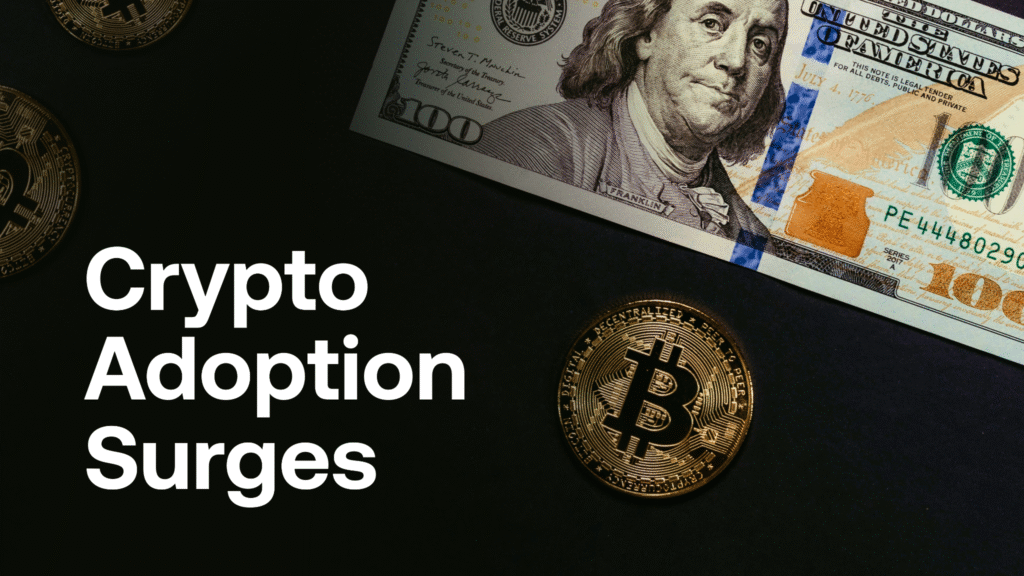By Patrick Carey, BEng, MCSD — CTO, CoinTerminal
Crypto adoption has never been broader. Global adoption is at record highs, with India, the United States, and much of APAC leading the surge. Stablecoins are at the heart of this shift. Tether alone processed more than a trillion dollars every month over the past year. This is not speculation. It is infrastructure at work.
Yet adoption keeps colliding with the same barrier. People can hold crypto, they can trade it, they can save with it. What they cannot easily do is live on it.I have spent two decades building financial systems for global banks and the past several years building in Web3. The pattern has not changed. Demand rises when access gets simple. The last mile remains the weak link.
Workers who get paid in stablecoins must shuffle through exchanges, banks, and fees before they can cover basic expenses. Families in Turkey, Brazil, or Argentina hedge against inflation by holding USDT but face obstacles the moment they try to spend it. Digital nomads find accounts frozen or payments declined simply because their money does not fit the systems built for yesterday. Crypto may be borderless in theory. In practice, it often stops short at the checkout counter.
The Real Barrier Is Access
The rails themselves are shifting. Visa began testing stablecoin settlement on Solana in 2023 and has since expanded support for additional stablecoins and blockchains. Mastercard is building corridors through initiatives like Paxos’ Global Dollar Network. Stripe reintroduced crypto payments and now enables millions of merchants to accept USDC through Shopify. These are not experiments. They are commitments from the largest processors in the world.
Fintech has already shown the demand for simplicity. Revolut built a base of more than 50 million customers and now processes over a trillion dollars in annualized volume. Its growth came from packaging access, not inventing new rails. Yet Revolut is fiat first and bank linked. For crypto users who value custody, it is not the answer.
Credit: depositphotos
Other crypto cards have appeared, such as Redot. They prove demand but also reveal the limitations of custodial models. If your balance can be frozen at the platform’s discretion, you are not gaining freedom. You are replicating the problems of the old system.
In my current work I see the same story every week. Developers, freelancers, and teams can get on ramped easily. They hit friction when they try to spend. That gap is why utility lags adoption.
Traditional cards set expectations for cashback, travel perks, and support when things go wrong. Crypto products rarely meet this standard. Even committed holders fall back to fiat not because they want to, but because it simply works better. Meanwhile, wallets are evolving. Second-generation options with social login and gasless flows are lowering barriers, which makes the absence of a clean off-ramp even more obvious
Three Standards for the Last Mile
The missing piece is not technology. It is design. And if the industry fails to deliver that design, crypto risks becoming trapped as a speculative playground instead of a usable economy.
To cross the last mile, crypto products must meet three standards.
- They must preserve custody so users never risk losing access to their funds.
- They must provide seamless global access across existing rails without hidden frictions.
- They must deliver rewards and experiences that equal or exceed those of traditional finance.
Credit: depositphotos
Years of watching launches in hot and cold markets point to a simple rule. Products that protect custody, work everywhere, and match rewards are the ones users keep. Without these elements, adoption plateaus. People will store value in crypto and still off-ramp to fiat to live their lives. That is not progress. It is surrender.
From Promise to Utility
Regulation is moving, but unevenly. Europe’s MiCA framework is licensing stablecoins and providing clear rules for issuers. The United States continues to progress through market-driven corridors and incremental guidance. Both paths converge on one reality: stablecoins are becoming legitimate, regulated money.
On the asset side, tokenization is changing what users can hold. BlackRock’s tokenized Treasury fund crossed the billion-dollar mark, which shows that yield instruments can live natively on chain. Institutions are leading this leg of the cycle, while retail enthusiasm has cooled. The future will not be won by narratives. It will be won by tools that let people live on chain.
Some will argue that fintech solved this problem. Revolut proves distribution mechanics, not sovereignty. Others will say crypto cards are in market today. They are, but custodial restrictions and low limits show their fragility. If you cannot guarantee access at the point of sale, you have not solved the last mile.
The adoption curve has shifted. The question is no longer whether people will hold crypto. They already do. The question is whether they can live on it.
That answer determines whether crypto becomes a permanent part of the financial system or remains a niche for speculation. The industry has carried the promise of borderless, user-owned money since the beginning. The only way to fulfill that promise is to fix the last mile.
This industry announcement article is for informational and educational purposes only and does not constitute financial or investment advice.














